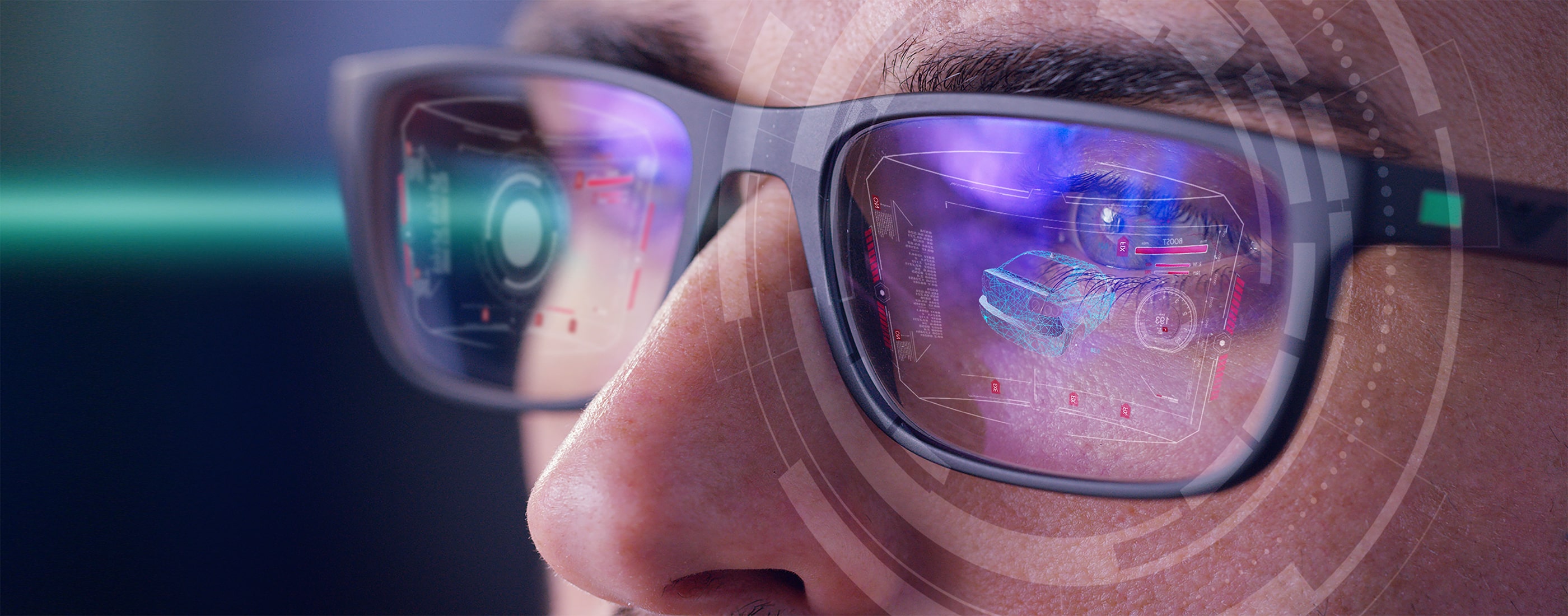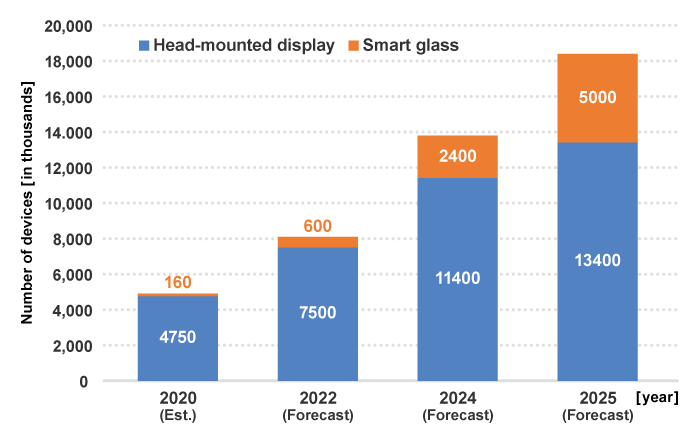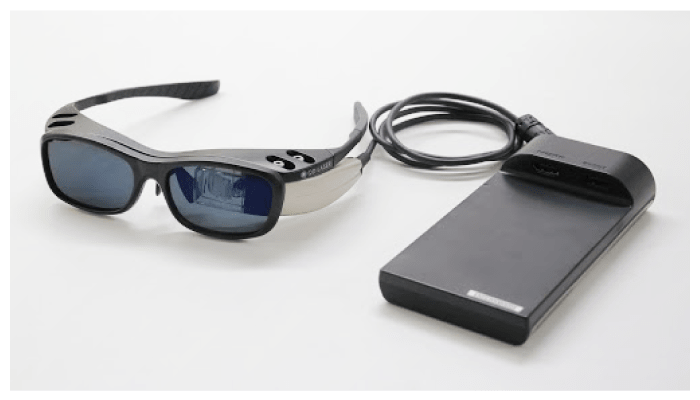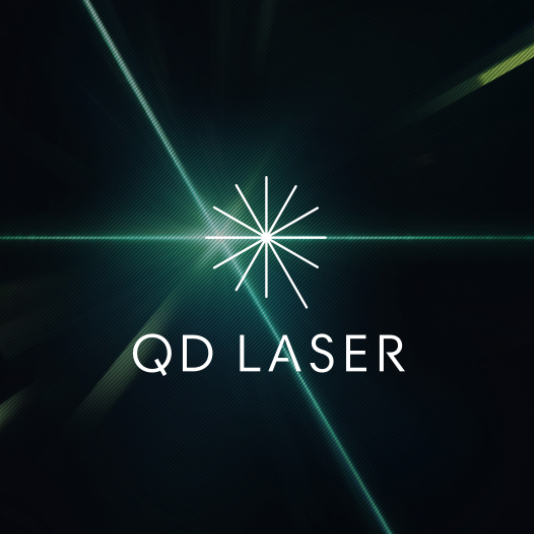TDK’s Remarkably Small Laser Module: A Game-Changer for AR
New Video Experiences: The Expanding Market of AR/VR
In the past, conventional TVs, PCs and displays only allowed passive viewing. But with next-generation technologies such as AR and VR, one can experience extended realities with superimposed images, information and perspectives which shift and adjust to movement. As video display technologies and software continue to evolve, the video device market, including smart glasses*1 and head-mounted displays*2, is expected to expand in the years ahead.
Further growth is expected in the near future in AR. Games in which characters appear superimposed over actual surroundings on smartphones and CG simulation apps which can test, for example, the placement of furniture in a room before purchase, are already becoming available. Wearable devices such as smart glasses are also entering the market. They are increasingly being put to practical use, such as in factories where employees wearing these glasses can be instructed on work procedures, or in museums where visitors can access information on exhibited works. Earlier versions of smart glasses, however, had issues with wearability, appearance and comfort, due to the large size and weight of its display and laser components. There is a demand for smaller and lighter devices in the effort to improve the quality of AR experiences.
New Type of Laser Module Achieves Dramatic Reduction in Size
Conventional AR-compatible smart glass modules reflect each of the three primary colors of light (RGB) from laser elements onto a lens and mirror, which are then projected as a single beam of light to display an image. Called a space-optics module, this type requires multiple components—a drawback resulting in larger size.
To solve this problem, TDK focused on new Planar Waveguide Technology*3 that neither uses a lens nor mirror in order to achieve significant reduction in module size. Planar Waveguide Technology—developed by NTT, a company known for its advanced optical telecommunications technologies—merges RGB lights through a planar pathway (waveguide). Combining this technology with TDK’s high-precision manufacturing techniques enabled the final module to be reduced to one-tenth the typical size of a space-optics module. This also enabled images to be displayed in full color depth, with a maximum of approximately 16.2 million colors. High-quality images will further enhance the quality of AR experiences.
Laser beams emitted from the new module are visualized onto a MEMS mirror, then reflected off a lens and projected directly onto the eye’s retina. Unlike how one sees real objects, images projected directly onto the retina will always be sharp, without the need to adjust focus. When used in AR glasses, which layers images over the view of an environment, all elements stay in focus, making it possible to provide a more realistic and higher-quality AR experience.
Practical Application as a Component in Vision Aid Begins
TDK’s ultra-small laser modules are currently in the process of being integrated into smart glass vision aids that take advantage of the practical feature of this technology, which allows clear and sharp images to be projected directly onto retinas. One such aid is equipped with a camera at the center of the frame and utilizes direct imaging onto the retina, which enables users to see clear images unaffected by conditions of the dioptric components of the eye (i.e., cornea, crystalline lens). TDK interviewed Makoto Suzuki, Technical Director of Laser Device and Visual Information Device Divisions at QD Laser, Inc., which developed a smart glass aid. “When we heard the idea of a ‘visual aid’ device, as opposed to hearing aids, we discovered that this direct imaging technology actually had a real potential to support vision issues. It is possible for people with myopia, hyperopia, astigmatism or presbyopia to see projected images without having to use corrective glasses or contact lenses.”
Furthermore, Suzuki says smart glasses have the potential to replace smartphones as smart devices in the future, as display technologies continue to evolve. “We think smart glasses will really take off in the coming years once we can improve awkward and uncomfortable designs, reduce size, and provide the same amount of information as current smartphones. Although we have not yet been able to achieve this, we expect the ultra-small laser module to become a key component in overcoming existing challenges.”
(Photo provided by QD Laser)
TDK’s Manufacturing Technology Developed From HDD Head Processing
Realization of the ultra-small laser module involved utilization of manufacturing technologies TDK has developed throughout the years in the production of a variety of electronic components. The technology employed to secure and meticulously polish an extremely small laser element (approximately 100 μm in width) on a tiny board called a carrier, was derived from methods involved in the precision processing of HDD heads. Additionally, techniques used to join laser elements, nanometers in size, were adopted from the manufacturing process of HDD Thermal-Assisted Magnetic Recording Heads. Suzuki explains why he chose TDK’s laser module for his company’s smart glass products. “TDK possesses a wealth of knowledge about the engineering and manufacturing of functional components, as well as the ability to handle mass production of new products in a flexible manner. Another reason was TDK’s advanced inspection capabilities.”
Practical applications of the ultra-small laser module in display technologies such as AR are growing. These tiny modules are expected to be integrated more and more into smart glasses (possibly the next post-smartphone device) and into video equipment such as VR-compatible head-mounted displays and ultra-portable projectors, and have great potential for the future.
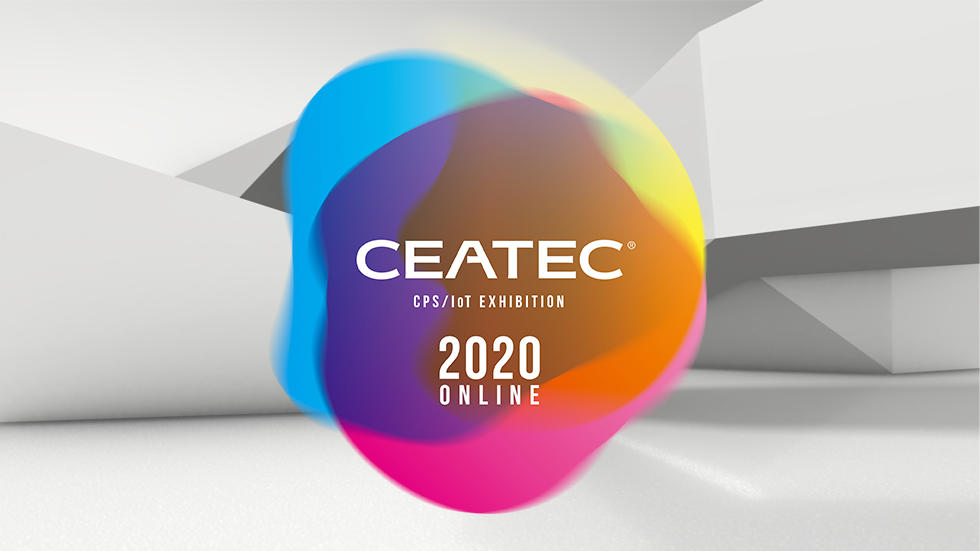
This product "Ultra-small laser module" has won the Semi-Grand Prix at the CEATEC AWARD 2020 in the "Elemental Technologies/Devices of the New Normal Society category".
Terminology
- Smart glass: A wearable device shaped like eyeglasses, commonly equipped with an AR display. Used by connecting to a smartphone or computer via Wi-Fi or other means. It can overlay various information on actual surrounding views and carries the potential to replace the smartphone as the next smart device of the future.
- Head-mounted display (HMD): A video display device mounted on the head for VR. It is increasingly being utilized in a broad range of applications including entertainment, medical care, and industrial use.
- Planar Waveguide Technology: The technology for forming optical waveguides similar to those in fiber optics, but on a planar substrate.
